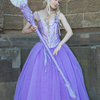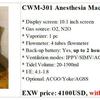AIRBRUSH: Understand the Basics of Airbrush Process - Part 2: Air Sources
When you find yourself first learning airbrush technique, the procedure might be intimidating. Not only do you have to learn a new painting technique, but you must learn how to use the equipment that goes along with it, as well. Unlike a paintbrush, the airbrush has to be mounted on an air source to get operated. Below are a few simple instructions to go by for your three basic kinds of air sources available: compressor, carbonic gas tank and propellant can.
Become familiar with the subsequent terms:
air source-a device or unit containing, or able to producing, pressurized air.
cfm-a measurement of air-flow: cubic feet each minute.
moisture filter-a device for removing water from air.
oil filter-a product for removing oil in the air source.
psi-a measurement of air pressure: pounds per square inch.
air regulator-a device for adjusting air pressure (psi).
Diaphragm Compressor (Air Medea Silent Compressor) - This compressor is normally made to propel one airbrush. All compressors have 1/4" pipe thread fittings to install airbrush hoses. With a diaphragm compressor, the airbrush hose is attached directly to the 1/4" fitting without having air regulator, moisture or oil filters attached beforehand. All airbrush hoses possess a 1/4" fitting created to be screwed on the compressor. Our recommendation is that an in-line moisture filter be utilized in the airbrush hose. The hose can be purchased with a built-in moisture filter, or one can be inserted after cutting the hose 18" from where the airbrush is attached.
Piston Compressor - This compressor is often more robust compared to a diaphragm compressor and produces more air than normally necessary to propel an airbrush. Therefore, the environment needs to be restricted before it reaches the atmosphere hose. This really is accomplished by attaching an aura regulator (Medea F A600 or F A700) to the 1/4" threads that range from compressor. The air regulator usually has an attached moisture filter which captures the moisture that is developed inside the compressor before it reaches the air hose. If the piston compressor uses oil, then an oil filter must also be attached after the regulator and before the hose to remove any oil that may work its way into the air source. Attach the airbrush hose--with or without an in-line moisture filter--right after the regulators and filters. Medea carries a full brand of accessories to meet your needs.
Propellant Cans (Medea SprayCraft Air Propellant) - Propellant cans are an affordable alternative to a compressor. A regulator is screwed onto the top of the the can. In the heart of the regulator can be a brass screw that activates the propellant. Airbrushing is an inventive strategy that uses a compressed air tool, named an airbrush, which sprays a variety of media these kinds of as inks, dyes, or paints on to most any area.NOTE: Before attaching the regulator to the propellant can, make sure that the brass screw is totally unscrewed so you don't inadvertently activate the propellant while attaching the regulator. When the regulator is attached, a vinyl hose is screwed to the threads of your regulator. One end attaches on the regulator and also the other end attaches for the airbrush. Once the airbrush is attached, then you can turn the brass screw clockwise to activate the propellant.
Carbonic Gas Tank - The 3rd approach to propelling the airbrush is using a carbonic gas tank. The http://www.youtube.com/watch?v=ahm2aK2cKFA - ver video - tank is filled with CO2 or nitrogen and is under very high pressure (800psi), so caution is advised when hooking it. Each tank takes a regulator specifically made for carbonic gas tanks. This device enables the adjustment of pressure for the user's requirements. The braided airbrush hose is coupled to the 1/4" male thread around the regulator, as well as the other end is coupled to the airbrush. When using a carbonic gas tank, there is not any necessity for either an oil filter or possibly a moisture filter.
After the airbrush hose is attached to the air source as well as the airbrush is coupled to the hose, you need an airbrush holder to enable you to set across the airbrush therefore it doesn't tip and spill paint, such as the Medea Airbrush Holder with regulator bracket. Now you're good to go to begin with airbrushing.

-----end-----
|





